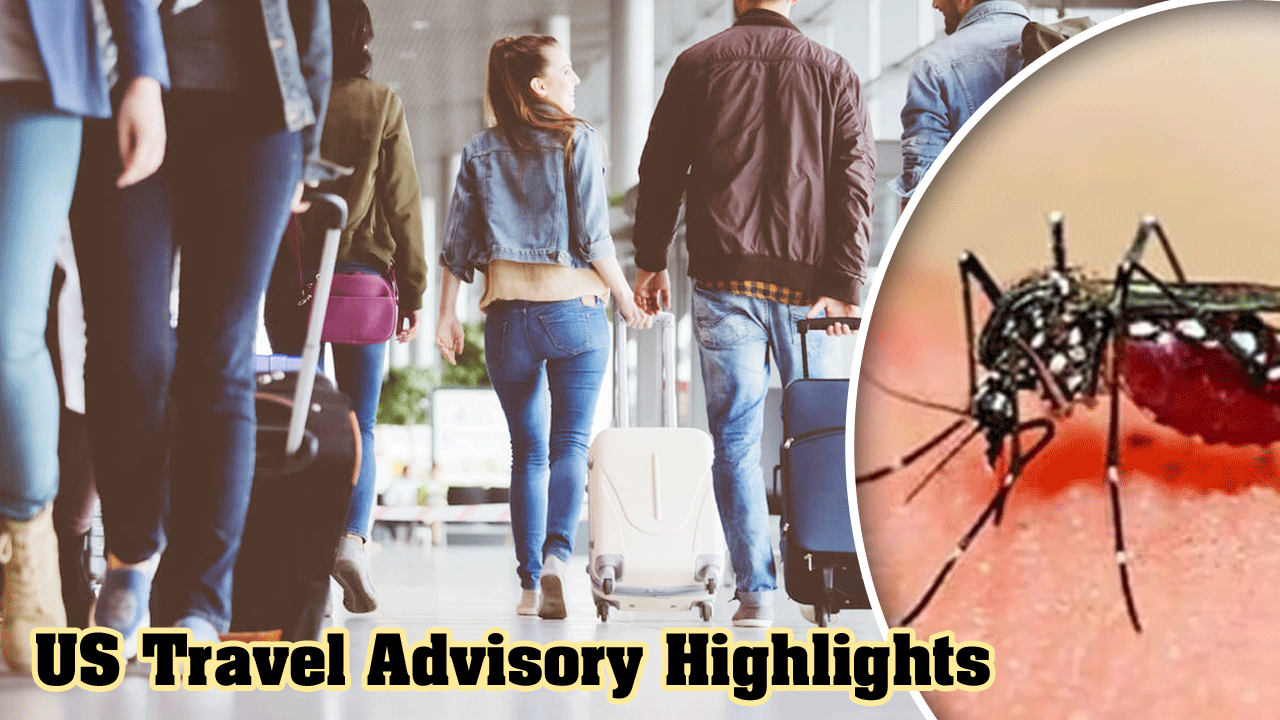US Travel Advisory Highlights Telangana’s Oversight in Reporting Chikungunya
The advisory, released on November 8, not only reflects poorly on the Telangana government’s public health management but also highlights the pervasive issue of underreporting seasonal illnesses like chikungunya and dengue.

Hyderabad: A recent travel advisory issued by the US Centers for Disease Control and Prevention (CDC) has drawn attention to the significant number of chikungunya cases in Telangana, exposing the state’s underreporting of the disease. The advisory, released on November 8, not only reflects poorly on the Telangana government’s public health management but also highlights the pervasive issue of underreporting seasonal illnesses like chikungunya and dengue.
Table of Contents
The Issue of Underreporting
Between July and October this year, Hyderabad and various districts in Telangana experienced widespread outbreaks of both dengue and chikungunya, which are transmitted by the Aedes aegypti mosquito. However, many cases of chikungunya were not diagnosed or reported properly. Private healthcare providers and senior doctors in Hyderabad revealed that most cases of fever and joint pain were mistakenly diagnosed as dengue due to the similarity in symptoms between the two diseases.
While dengue cases were given priority for treatment, chikungunya, which requires distinct management and care, went largely undiagnosed. The CDC’s travel advisory is a clear indication that Telangana’s Public Health Department did not take adequate steps to confirm Chikungunya cases, allowing the disease to spread undetected.
What Did the CDC Say?
In a succinct statement, the CDC warned travelers about the high number of undiagnosed chikungunya cases in Telangana. The advisory stated:
“CDC has identified a higher-than-expected number of chikungunya cases among US travelers returning from the State of Telangana, India.”
The advisory suggests that many travelers who had contracted chikungunya in Telangana were either not properly treated or were not diagnosed during their stay. By the time these individuals arrived in the United States, the disease was detected through mandatory tests as part of the US’s disease surveillance program.
Also Read: Land Acquisition Begins for Major Infrastructure Projects in Secunderabad
Chikungunya vs Dengue: A Clear Distinction
While both dengue and chikungunya are caused by the same mosquito species, they are distinct diseases with different symptoms, progression, and long-term impacts. Here’s a comparison between the two diseases to clarify the differences:
| Symptom | Chikungunya | Dengue |
|---|---|---|
| Presentation | Fever with joint pains | Fever, headache, muscle pain, bleeding |
| Fever Duration | Abrupt onset, lasts 3-5 days | Acute onset, lasts 5-7 days |
| Rash | Appears on days 2-3 | Appears between days 5-7 |
| Joint Pains | Common, frequent | Less common |
| Pain Type | Predominantly joint pain | Predominantly muscle pain |
| Bleeding | Rare | Common |
| Organ Involvement | Rare | Common (can affect organs) |
| Low White Blood Cells | Not frequent | Common |
| Low Platelet Count | Not frequent | Common |
Long-Term Effects of Chikungunya
Chikungunya differs from dengue in its long-term effects. While most dengue patients recover quickly if diagnosed and treated promptly, many Chikungunya patients continue to experience debilitating joint pains and stiffness for months, or even years, after the initial infection. These chronic symptoms, known as chronic chikungunya, can have a profound impact on a person’s quality of life, making timely diagnosis and proper treatment critical.
A Wake-Up Call for Telangana’s Health Department
The CDC’s warning has now exposed the lapses in the state’s health response. Telangana’s government must act swiftly to address the shortcomings in disease surveillance and reporting. As the state grapples with the ongoing chikungunya and dengue outbreaks, proper reporting, early diagnosis, and comprehensive treatment will be key in managing these vector-borne diseases effectively.
